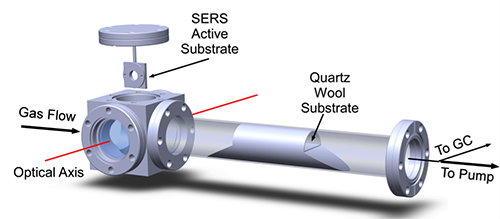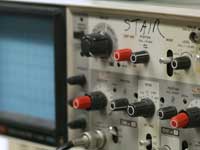Atomic Layer Deposition (ALD) of Silver and Progress Toward Operando Catalytic Studies
A molecular level understanding of catalysts and catalytic reactions is required for improving existing catalytic processes as well as developing new systems. Most surface science studies of the mechanisms of catalytic reactions are done in UHV. The surface state of a catalyst is affected by the local environment. Operando studies of catalytic systems have the potential to enhance fundamental understanding of catalysts under realistic working conditions. An ALD reactor that is capable of utilizing surface-enhanced Raman spectroscopy (SERS) has been developed. SERS is ideally suited to the characterization of surface chemical reactions due to its extraordinary sensitivity and high chemical information content. The reactor has shown to successfully grow Al2O3, the model ALD system, at deposition rates comparable to other ALD machines. Ag nanoparticles have been grown by ABC-type ALD on powdered supports. In addition, the reactor is connected to a GC for catalytic studies. We plan to study fundamental mechanisms of the Ag ALD process as well as model catalytic reactions such as the epoxidation of ethylene over Ag catalysts.
 Figure 1:
Figure 1:
Hot wall viscous flow ALD reactor that includes an optical window for in situ ALD-SERS studies. The reactor tube is connected to a GC for heterogeneous catalytic studies.
Grant: ICEP

